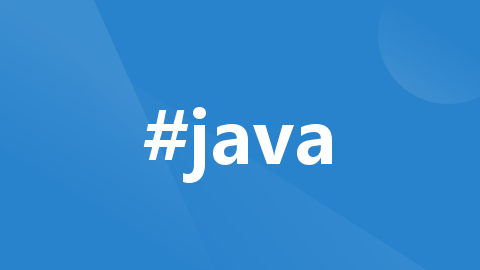
转载 spring @Cacheable扩展实现缓存自动过期时间以及自动刷新
用过spring cache的朋友应该会知道,Spring Cache默认是不支持在@Cacheable上添加过期时间的,虽然可以通过配置缓存。
转自:聊聊如何基于spring @Cacheable扩展实现缓存自动过期时间以及自动刷新-腾讯云开发者社区-腾讯云 (tencent.com)
前言
用过spring cache的朋友应该会知道,Spring Cache默认是不支持在@Cacheable上添加过期时间的,虽然可以通过配置缓存容器时统一指定。形如
@Bean
public CacheManager cacheManager(
@SuppressWarnings("rawtypes") RedisTemplate redisTemplate) {
RedisCacheManager cacheManager= new RedisCacheManager(redisTemplate);
cacheManager.setDefaultExpiration(60);
Map<String,Long> expiresMap = new HashMap<>();
expiresMap.put("customUser",30L);
cacheManager.setExpires(expiresMap);
return cacheManager;
}复制
但有时候我们会更习惯通过注解指定过期时间。今天我们就来聊一下如何扩展@Cacheable实现缓存自动过期以及缓存即将到期自动刷新
2
实现注解缓存过期前置知识
SpringCache包含两个顶级接口,Cache和CacheManager,通过CacheManager可以去管理一堆Cache。因此我们要扩展@Cacheable,就脱离不了对Cache和CacheManager进行扩展
其次要实现过期时间,首先是引入的缓存产品,他本身就要支持过期时间,比如引入的缓存为ConcurrentHashMap,他原本就是不支持过期时间,如果要扩展,就要非常耗费精力实现
3
实现注解缓存过期
01
方法一:通过自定义cacheNames方式
形如下
@Cacheable(cacheNames = "customUser#30", key = "#id")复制
通过#分隔,#后面部分代表过期时间(单位为秒)
实现逻辑步骤为:
1、自定义缓存管理器并继承RedisCacheManager,同时重写createRedisCache方法
示例:
public class CustomizedRedisCacheManager extends RedisCacheManager {
public CustomizedRedisCacheManager(RedisCacheWriter cacheWriter, RedisCacheConfiguration defaultCacheConfiguration) {
super(cacheWriter, defaultCacheConfiguration);
}
@Override
protected RedisCache createRedisCache(String name, RedisCacheConfiguration cacheConfig) {
String[] array = StringUtils.delimitedListToStringArray(name, "#");
name = array[0];
if (array.length > 1) {
long ttl = Long.parseLong(array[1]);
cacheConfig = cacheConfig.entryTtl(Duration.ofSeconds(ttl));
}
return super.createRedisCache(name, cacheConfig);
}
}复制
2、将默认的缓存管理器改成我们自定义的缓存管理器
示例:
@EnableCaching
@Configuration
public class CacheConfig {
@Bean
public CacheManager cacheManager() {
RedisCacheConfiguration defaultCacheConfig = RedisCacheConfiguration.defaultCacheConfig()
.entryTtl(Duration.ofDays(1));
CustomizedRedisCacheManager redisCacheManager = new CustomizedRedisCacheManager(RedisCacheWriter.nonLockingRedisCacheWriter(redisConnectionFactory()), defaultCacheConfig);
return redisCacheManager;
}
}复制
通过如上2个步骤,即可实现缓存过期
02
方法二:通过自定义派生@Cacheable注解
第一种方法的实现是简单,但缺点是语义不直观,因此得做好宣导以及wiki,不然对于新人来说,他可能都不知道cacheName用#分割是代表啥意思
方法二的实现逻辑步骤如下
1、自定义注解LybGeekCacheable
@Target({ElementType.TYPE, ElementType.METHOD})
@Retention(RetentionPolicy.RUNTIME)
@Inherited
@Documented
@Cacheable(cacheManager = CacheConstant.CUSTOM_CACHE_MANAGER,keyGenerator = CacheConstant.CUSTOM_CACHE_KEY_GENERATOR)
public @interface LybGeekCacheable {
@AliasFor(annotation = Cacheable.class,attribute = "value")
String[] value() default {};
@AliasFor(annotation = Cacheable.class,attribute = "cacheNames")
String[] cacheNames() default {};
@AliasFor(annotation = Cacheable.class,attribute = "key")
String key() default "";
@AliasFor(annotation = Cacheable.class,attribute = "keyGenerator")
String keyGenerator() default "";
@AliasFor(annotation = Cacheable.class,attribute = "cacheResolver")
String cacheResolver() default "";
@AliasFor(annotation = Cacheable.class,attribute = "condition")
String condition() default "";
@AliasFor(annotation = Cacheable.class,attribute = "unless")
String unless() default "";
@AliasFor(annotation = Cacheable.class,attribute = "sync")
boolean sync() default false;
long expiredTimeSecond() default 0;
long preLoadTimeSecond() default 0;
}复制
大部分注解和@Cacheable保持一致,新增expiredTimeSecond缓存过期时间以及缓存自动刷新时间preLoadTimeSecond
2、自定义缓存管理器并继承RedisCacheManager并重写loadCaches和createRedisCache
public class CustomizedRedisCacheManager extends RedisCacheManager implements BeanFactoryAware {
private Map<String, RedisCacheConfiguration> initialCacheConfigurations;
private RedisTemplate cacheRedisTemplate;
private RedisCacheWriter cacheWriter;
private DefaultListableBeanFactory beanFactory;
private RedisCacheConfiguration defaultCacheConfiguration;
protected CachedInvocation cachedInvocation;
public CustomizedRedisCacheManager(RedisCacheWriter cacheWriter, RedisCacheConfiguration defaultCacheConfiguration, Map<String, RedisCacheConfiguration> initialCacheConfigurations,RedisTemplate cacheRedisTemplate) {
super(cacheWriter, defaultCacheConfiguration, initialCacheConfigurations);
this.initialCacheConfigurations = initialCacheConfigurations;
this.cacheRedisTemplate = cacheRedisTemplate;
this.cacheWriter = cacheWriter;
this.defaultCacheConfiguration = defaultCacheConfiguration;
//采用spring事件驱动亦可
//EventBusHelper.register(this);
}
public Map<String, RedisCacheConfiguration> getInitialCacheConfigurations() {
return initialCacheConfigurations;
}
@Override
protected Collection<RedisCache> loadCaches() {
List<RedisCache> caches = new LinkedList<>();
for (Map.Entry<String, RedisCacheConfiguration> entry : getInitialCacheConfigurations().entrySet()) {
caches.add(createRedisCache(entry.getKey(), entry.getValue()));
}
return caches;
}
@Override
public RedisCache createRedisCache(String name, @Nullable RedisCacheConfiguration cacheConfig) {
CustomizedRedisCache customizedRedisCache = new CustomizedRedisCache(name, cacheWriter, cacheConfig != null ? cacheConfig : defaultCacheConfiguration);
return customizedRedisCache;
}
}复制
3、在spring bean初始化完成后,设置缓存过期时间,并重新初始化缓存。
Component
@Slf4j
public class CacheExpireTimeInit implements SmartInitializingSingleton, BeanFactoryAware {
private DefaultListableBeanFactory beanFactory;
@Override
public void setBeanFactory(BeanFactory beanFactory) throws BeansException {
this.beanFactory = (DefaultListableBeanFactory)beanFactory;
}
@Override
public void afterSingletonsInstantiated() {
Map<String, Object> beansWithAnnotation = beanFactory.getBeansWithAnnotation(Component.class);
if(MapUtil.isNotEmpty(beansWithAnnotation)){
for (Object cacheValue : beansWithAnnotation.values()) {
ReflectionUtils.doWithMethods(cacheValue.getClass(), method -> {
ReflectionUtils.makeAccessible(method);
boolean cacheAnnotationPresent = method.isAnnotationPresent(LybGeekCacheable.class);
if(cacheAnnotationPresent){
LybGeekCacheable lybGeekCacheable = method.getAnnotation(LybGeekCacheable.class);
CacheHelper.initExpireTime(lybGeekCacheable);
}
});
}
CacheHelper.initializeCaches();
}
}复制
注: 为啥要重新初始化缓存,主要是为了一开始默认的是没设置缓存过期,重新初始化是为了设置过期时间。为啥调用initializeCaches()这个方法,看下官方描述就知道了
/**
* Initialize the static configuration of caches.
* <p>Triggered on startup through {@link #afterPropertiesSet()};
* can also be called to re-initialize at runtime.
* @since 4.2.2
* @see #loadCaches()
*/
public void initializeCaches() {
Collection<? extends Cache> caches = loadCaches();
synchronized (this.cacheMap) {
this.cacheNames = Collections.emptySet();
this.cacheMap.clear();
Set<String> cacheNames = new LinkedHashSet<>(caches.size());
for (Cache cache : caches) {
String name = cache.getName();
this.cacheMap.put(name, decorateCache(cache));
cacheNames.add(name);
}
this.cacheNames = Collections.unmodifiableSet(cacheNames);
}
}复制
他就是在运行的时候,可以重新初始化缓存
4、将默认的缓存管理器改成我们自定义的缓存管理器
@Bean(CacheConstant.CUSTOM_CACHE_MANAGER)
public CacheManager cacheManager(RedisConnectionFactory connectionFactory,RedisTemplate cacheRedisTemplate) {
RedisCacheWriter redisCacheWriter = RedisCacheWriter.nonLockingRedisCacheWriter(connectionFactory);
RedisCacheConfiguration defaultCacheConfig = RedisCacheConfiguration.defaultCacheConfig()
.entryTtl(Duration.ofDays(1));
Map<String, RedisCacheConfiguration> initialCacheConfiguration = new HashMap<>();
return new CustomizedRedisCacheManager(redisCacheWriter,defaultCacheConfig,initialCacheConfiguration,cacheRedisTemplate);
}复制
5、测试
@LybGeekCacheable(cacheNames = "customUser", key = "#id",expiredTimeSecond = 30)
public User getUserFromRedisByCustomAnno(String id){
System.out.println("get user with id by custom anno: 【" + id + "】");
Faker faker = Faker.instance(Locale.CHINA);
return User.builder().id(id).username(faker.name().username()).build();
}复制
@Test
public void testCacheExpiredAndPreFreshByCustom() throws Exception{
System.out.println(userService.getUserFromRedisByCustomAnno("1"));
}复制

以上就是扩展缓存过期的实现主要方式了,接下来我们来聊一下缓存自动刷新
4
缓存自动刷新
一般来说,当缓存失效时,请求就会打到后端的数据库上,此时可能就会造成缓存击穿现象。因此我们在缓存即将过期时主动刷新缓存,提高缓存的命中率,进而提高性能。
spring4.3的@Cacheable提供了一个sync属性。当缓存失效后,为了避免多个请求打到数据库,系统做了一个并发控制优化,同时只有一个线程会去数据库取数据其它线程会被阻塞
5
缓存即将到期自动刷新
1、封装缓存注解对象CachedInvocation
/**
* @description: 标记了缓存注解的方法类信息,用于主动刷新缓存时调用原始方法加载数据
*/
@Data
@AllArgsConstructor
@NoArgsConstructor
@Builder
public final class CachedInvocation {
private CacheMetaData metaData;
private Object targetBean;
private Method targetMethod;
private Object[] arguments;
public Object invoke()
throws ClassNotFoundException, NoSuchMethodException, InvocationTargetException, IllegalAccessException {
final MethodInvoker invoker = new MethodInvoker();
invoker.setTargetObject(this.getTargetBean());
invoker.setArguments(this.getArguments());
invoker.setTargetMethod(this.getTargetMethod().getName());
invoker.prepare();
return invoker.invoke();
}
}复制
2、编写一个获取即将到期时间参数切面,并进行事件发布调用对象CachedInvocation
@Component
@Aspect
@Slf4j
@Order(2)
public class LybGeekCacheablePreLoadAspect {
@Autowired
private ApplicationContext applicationContext;
@SneakyThrows
@Around(value = "@annotation(lybGeekCacheable)")
public Object around(ProceedingJoinPoint proceedingJoinPoint,LybGeekCacheable lybGeekCacheable){
buildCachedInvocationAndPushlish(proceedingJoinPoint,lybGeekCacheable);
Object result = proceedingJoinPoint.proceed();
return result;
}
private void buildCachedInvocationAndPushlish(ProceedingJoinPoint proceedingJoinPoint,LybGeekCacheable lybGeekCacheable){
Method method = this.getSpecificmethod(proceedingJoinPoint);
String[] cacheNames = getCacheNames(lybGeekCacheable);
Object targetBean = proceedingJoinPoint.getTarget();
Object[] arguments = proceedingJoinPoint.getArgs();
KeyGenerator keyGenerator = SpringUtil.getBean(CacheConstant.CUSTOM_CACHE_KEY_GENERATOR,KeyGenerator.class);
Object key = keyGenerator.generate(targetBean, method, arguments);
CachedInvocation cachedInvocation = CachedInvocation.builder()
.arguments(arguments)
.targetBean(targetBean)
.targetMethod(method)
.metaData(CacheMetaData.builder()
.cacheNames(cacheNames)
.key(key)
.expiredTimeSecond(lybGeekCacheable.expiredTimeSecond())
.preLoadTimeSecond(lybGeekCacheable.preLoadTimeSecond())
.build()
)
.build();
// EventBusHelper.post(cachedInvocation);
applicationContext.publishEvent(cachedInvocation);
}复制
3、自定义缓存管理器,接收CachedInvocation
示例
public class CustomizedRedisCacheManager extends RedisCacheManager implements BeanFactoryAware {
//@Subscribe
@EventListener
private void doWithCachedInvocationEvent(CachedInvocation cachedInvocation){
this.cachedInvocation = cachedInvocation;
}复制
4、自定义cache并重写get方法
@Slf4j
public class CustomizedRedisCache extends RedisCache {
private ReentrantLock lock = new ReentrantLock();
public CustomizedRedisCache(String name, RedisCacheWriter cacheWriter, RedisCacheConfiguration cacheConfig) {
super(name, cacheWriter,cacheConfig);
}
@Override
@Nullable
public ValueWrapper get(Object key) {
ValueWrapper valueWrapper = super.get(key);
CachedInvocation cachedInvocation = CacheHelper.getCacheManager().getCachedInvocation();
long preLoadTimeSecond = cachedInvocation.getMetaData().getPreLoadTimeSecond();
if(ObjectUtil.isNotEmpty(valueWrapper) && preLoadTimeSecond > 0){
String cacheKey = createCacheKey(key);
RedisTemplate cacheRedisTemplate = CacheHelper.getCacheManager().getCacheRedisTemplate();
Long ttl = cacheRedisTemplate.getExpire(cacheKey, TimeUnit.SECONDS);
if(ObjectUtil.isNotEmpty(ttl) && ttl <= preLoadTimeSecond){
log.info(">>>>>>>>>>> cacheKey:{}, ttl: {},preLoadTimeSecond: {}",cacheKey,ttl,preLoadTimeSecond);
ThreadPoolUtils.execute(()->{
lock.lock();
try{
CacheHelper.refreshCache(super.getName());
}catch (Exception e){
log.error("{}",e.getMessage(),e);
}finally {
lock.unlock();
}
});
}
}
return valueWrapper;
}
}复制
5、缓存即将到期主动刷新缓存方法
public static void refreshCache(String cacheName){
boolean isMatchCacheName = isMatchCacheName(cacheName);
if(isMatchCacheName){
CachedInvocation cachedInvocation = getCacheManager().getCachedInvocation();
boolean invocationSuccess;
Object computed = null;
try {
computed = cachedInvocation.invoke();
invocationSuccess = true;
} catch (Exception ex) {
invocationSuccess = false;
log.error(">>>>>>>>>>>>>>>>> refresh cache fail",ex.getMessage(),ex);
}
if (invocationSuccess) {
Cache cache = getCacheManager().getCache(cacheName);
if(ObjectUtil.isNotEmpty(cache)){
Object cacheKey = cachedInvocation.getMetaData().getKey();
cache.put(cacheKey, computed);
log.info(">>>>>>>>>>>>>>>>>>>> refresh cache with cacheName-->【{}】,key--> 【{}】 finished !",cacheName,cacheKey);
}
}
}
}复制
6、测试
@LybGeekCacheable(cacheNames = "customUserName", key = "#username",expiredTimeSecond = 20,preLoadTimeSecond = 15)
public User getUserFromRedisByCustomAnnoWithUserName(String username){
System.out.println("get user with username by custom anno: 【" + username + "】");
Faker faker = Faker.instance(Locale.CHINA);
return User.builder().id(faker.idNumber().valid()).username(username).build();
}复制
@Test
public void testCacheExpiredAndPreFreshByCustomWithUserName() throws Exception{
System.out.println(userService.getUserFromRedisByCustomAnnoWithUserName("zhangsan"));
TimeUnit.SECONDS.sleep(5);
System.out.println("sleep 5 second :" + userService.getUserFromRedisByCustomAnnoWithUserName("zhangsan"));
TimeUnit.SECONDS.sleep(10);
System.out.println("sleep 10 second :" + userService.getUserFromRedisByCustomAnnoWithUserName("zhangsan"));
TimeUnit.SECONDS.sleep(5);
System.out.println("sleep 5 second :" + userService.getUserFromRedisByCustomAnnoWithUserName("zhangsan"));
}复制

6
总结
本文主要介绍了如何基于spring @Cacheable扩展实现缓存自动过期时间以及缓存即将到期自动刷新。
不知道有没有朋友会有疑问,为啥@Cacheable不提供一个ttl属性,毕竟也不是很难。在我看来,spring更多提供的是一个通用的规范和标准,如果定义的缓存,本身不支持ttl,你在@Cacheable里面配置ttl就不合适了,有时候实现一个组件或者框架,考虑的是不是能不能实现,而是有没有必要实现,更多是一种权衡和取舍
更多推荐
 已为社区贡献1条内容
已为社区贡献1条内容









所有评论(0)